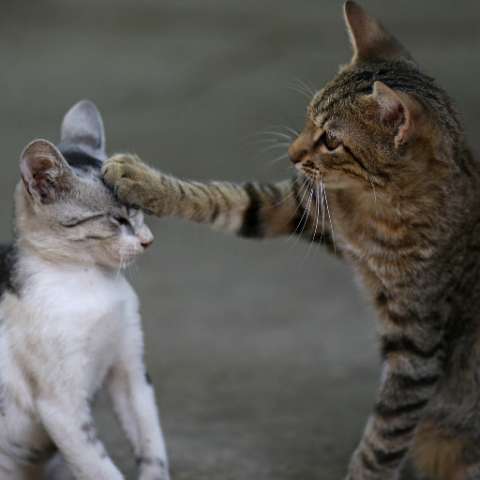Dealing With Aggression in Cats
Cat owners know that cats can be a handful. From running around and scratching furniture to getting into things they shouldn't, cats can be quite the mischievous animals. But even more concerning is when cats become aggressive. Whether it's towards other animals or humans, aggression in cats can be dangerous and requires immediate attention. Let’s look at some ways to reduce aggression in cats.

Understand Feline Behavior
Step one in dealing with cat aggression is understanding why your cat might be acting out. There are several reasons why a cat may become aggressive, such as feeling threatened, feeling territorial, or simply not being socialized enough. Knowing the root cause of the problem is key to finding an effective solution.
Create a Safe Space for Your Cat
Another way to reduce aggression in cats is by creating a safe space for them where they feel comfortable and secure. This space should be free from any other pets or humans and should provide plenty of hiding spots and areas for your cat to explore and play without interruption. You should also make sure that you provide your cat with plenty of toys, food, water, and litter boxes so that they have everything they need without having to venture too far from their safe space.
Treat Aggressive Behavior Appropriately
When it comes to dealing with aggressive behavior, it’s important that you treat it appropriately—even if it seems like something small or insignificant. If your cat hisses or growls at another pet or person, don't simply ignore the behavior; instead, address it head-on by redirecting their energy towards something positive (like playing with a toy). If the behavior continues for an extended period of time despite your efforts, it’s best to consult a professional animal behaviorist who can help you better understand what's going on with your pet and how best to deal with any underlying issues that may be causing the aggressive behavior.
Aggression in cats can be scary and dangerous so it's important to address it promptly when you see signs of aggression from your pet. The best way to do this is by understanding feline behavior and why cats may act out aggressively. Additionally, creating a safe space for them where they feel comfortable and secure will help reduce the chances of aggressive behavior occurring again in the future. Additionally, treating aggressive behaviors appropriately is key so that you can ensure that these behaviors don't become more frequent over time - if this happens then consulting with a professional animal behaviorist is recommended so they can help get to the bottom of what's causing the issue at hand! With these tips in mind, dealing with aggression in cats doesn't have to be as daunting as it sounds!
Related Articles:
How to Stop Your Cat from Biting
How to Stop a Cat to Stop Biting
Spotting Signs of Stress in Cats
How to Train Your Cat to Stop Biting
How to Handle Aggression in Cats


Leave a comment